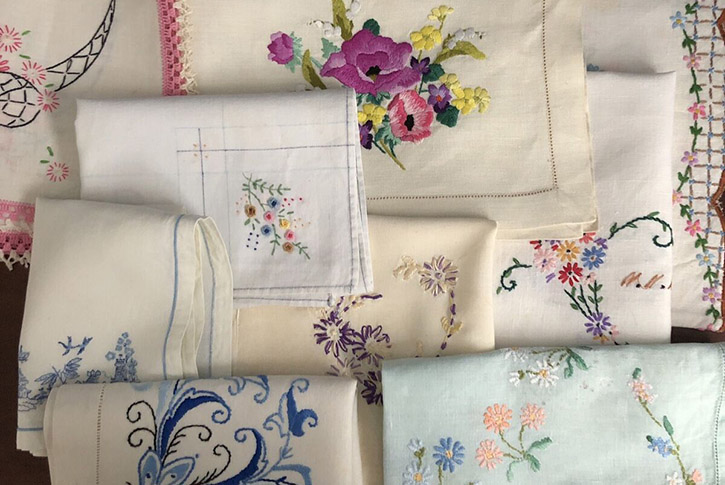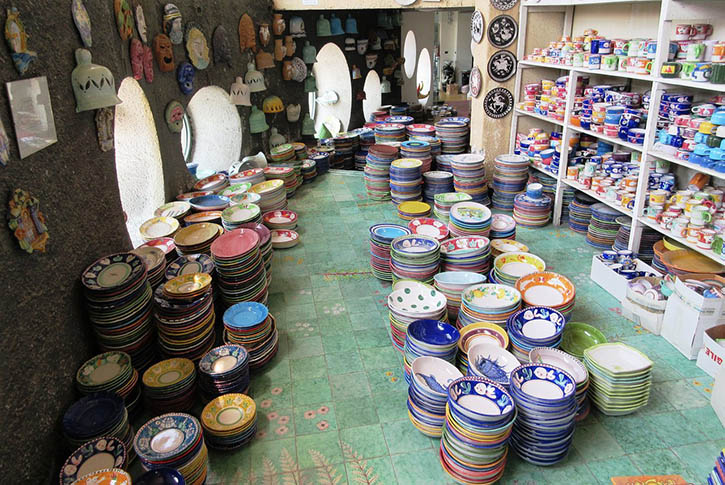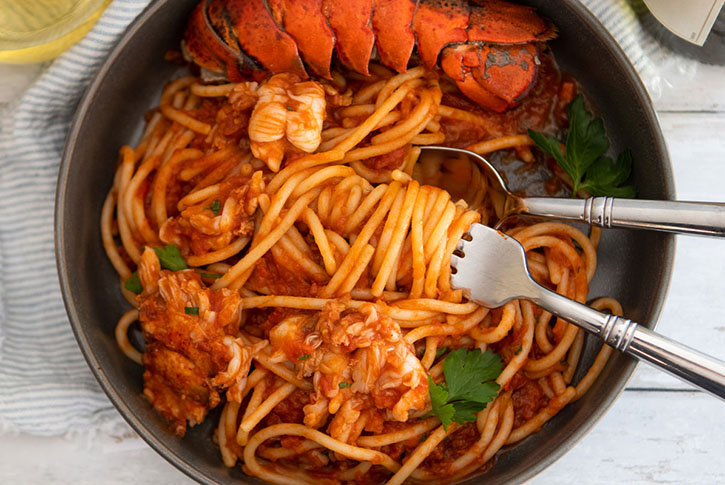The Amalfi coast whispers through Salerno with less of a tourist shout and more of a sincere voice. When I stepped off the train, I could sense a rhythm in the streets—a rhythm not orchestrated for visitors, but one deeply rooted in daily life. This authenticity guided every step, from the crumbling corners of medieval alleyways to the warm scent of lemon rind drifting from a pastry shop. It also shaped the way I shopped. I didn’t come looking for mass-produced miniatures or airport fridge magnets. I came to Salerno seeking something more tactile—souvenirs that hold weight, texture, scent, flavor, and history. And I found them.
1. The Morning Markets: Where Shopping Still Breathes
My first stop was Mercato di Via Papio, not far from the Lungomare Trieste. It’s not the grandest market in Italy, and that’s precisely why I chose it. The air here wasn’t tainted with expectation. Locals shuffled between stalls with baskets instead of cameras. One elderly woman in a navy cardigan and coral lipstick let me know with a single glance that I was standing too long in front of the tomatoes. I moved. I listened.
Here, I stumbled upon handwoven baskets that immediately reminded me of my grandmother’s kitchen. Each was slightly imperfect. Each told of the hand that made it. The vendor, a wiry man who kept a ballpoint pen behind one ear, showed me how the reeds were gathered from near the Sele River, soaked, stripped, and twisted. He didn’t try to sell me one. He just explained. I bought two.
A few steps down, I noticed small linen sachets—no labels, no plastic wrap—just clean fabric tied with twine. Inside: dried citrus peel and bay leaves, scented softly but distinctly. “For the armadio,” the woman said, tapping her chest with a knowing nod. For the closet. I nodded back and tucked three into my bag. I hadn’t even planned to shop yet. That’s how Salerno works.
2. Ceramics of Vietri sul Mare: Patterns That Speak in Color
It would be nearly sinful to talk about Salerno and not mention Vietri sul Mare, just a few kilometers away. I took the early bus one day, winding along the cliffside with the sea beside me like a restless, flickering mirror. Vietri is the kind of place where the buildings wear ceramics like jewelry. Walls gleam with panels of painted tile; staircases spiral with glazed blue and lemon-yellow steps.
I found my way to Ceramica Artistica Solimene, a labyrinthine workshop and showroom wrapped in a mid-century building designed by Paolo Soleri. Inside, color exploded in all directions. There were bowls large enough for family meals and espresso cups so dainty I feared breaking them with a single glance.
But I was drawn to the wall tiles—single pieces sold like postcards. One tile showed a fisherman reeling in a catch, another a woman holding a basket of figs. Their charm wasn’t just in the brushwork but in the very subject matter. Everyday scenes, painted for nobody and everybody at once.
I picked out four. I imagined them embedded in my kitchen wall someday, not as decoration, but as witnesses to every cup of coffee brewed and every loaf of bread broken.
3. Paper from Amalfi: A Texture Like No Other

There’s a weight to handmade paper that can’t be mimicked. While Amalfi is the better-known source, I found one shop in Salerno’s old town—Cartoleria del Corso—that stocked it. It sat neatly on a pine shelf, tied with thin string, smelling faintly of the cotton and cellulose from which it was born.
The man behind the counter offered me a seat, poured a thimble of espresso, and showed me how the watermark appears only when held to the light. I asked too many questions, and he answered every one as if he’d been waiting to tell someone.
I chose several sheets and matching envelopes. Cream-colored, feathered at the edges, pressed flat with a whisper of texture. Later, back at the hotel, I wrote a few lines to a friend. The ink bled slightly, like breath spreading across a cold window. It felt like writing in the 16th century.
4. The Taste of Campania: Edible Memories
Of course, the strongest souvenirs are those you taste. The kind you try to ration but inevitably finish before the plane even takes off. In Salerno, food isn’t sold; it’s presented. Pride glows from behind every counter.
At Antica Salumeria Gagliotta, tucked along Via dei Mercanti, I found an array of goods that practically insisted on being bought. I took home a wax-wrapped wheel of caciocavallo, its rind rough and smelling of dry hay. It was aged to a firmness that made slicing almost ritualistic.
Next to it, a bag of sun-dried tomatoes—dark, wrinkled, pungent. They’d been dried on rooftops, pressed with olive oil and herbs. I was told they’d last for months, but they didn’t survive the week.
In a small wooden crate lined with straw sat jars of anchovies from Cetara, suspended in golden olive oil. They gleamed like bronze coins. I packed two jars, fully aware of the customs inspection risk. Some flavors are worth explaining.
5. Perfumes from the Garden: Scents That Linger in Memory
I’d read about a family-run perfumery operating out of a 17th-century building near the Villa Comunale di Salerno. The entrance was unassuming—just a brass plate on an old wooden door. Inside, the scent struck immediately: lemon blossom, wild fennel, and rosemary.
They called themselves Essenza del Sud, and their creations weren’t flashy. No bottles shaped like torsos, no celebrity endorsements. Just fragrance crafted with discipline and patience.
I sampled a cologne named Brezza di Salerno. It opened with citrus, yes, but softened into something woodier—perhaps myrtle or pine resin. I couldn’t quite place it, but that made it better. I bought a bottle. It now lives on my desk, and every spray returns me to that cool, tiled room and the morning breeze over the marina.
6. Embroidered Linens: Threads Tied to Generations
At Ricami e Tradizione, I lingered longer than I meant to. The shop was dimly lit, and quiet enough to hear the thread whisper through the cloth. A young woman was embroidering a table runner by hand, needle flashing in and out with an elegance born from repetition.

There were pillowcases stitched with pomegranates and tablecloths hemmed in lace. But what caught my eye was a set of hand towels, each featuring the Duomo di Salerno in fine, navy thread. It was an image I’d seen only hours earlier, bathed in golden light. Now it would hang in my home, present in an entirely different way.
She wrapped them in paper, tied the bundle with a thin strip of linen, and smiled as if she’d just passed me a family heirloom.
7. Jewelry with Regional Stone: The Glow of Campania
On a quiet corner near Piazza Flavio Gioia, I came across a workshop that dealt in Campanian lava stone jewelry. The artist, a stoic man with a turquoise ring on each hand, worked over a tray of irregular stones—black, grey, honeycomb-pocked. Some bore tiny flecks of green from the volcanic soil.
He didn’t speak much. He didn’t need to. I watched as he mounted a smooth, dark stone into a copper setting, twisting it like a knot into a ring.
I chose a pendant. Circular. Slightly warm to the touch. I liked the idea of wearing something formed from eruption and time—violence made ornamental by the hands of someone calm.
8. Books in Dialect: The Language of Home
One afternoon, rain nudged me into Libreria Internazionale, a bookstore more crowded than curated, and all the more charming for it. I wandered past cookbooks, regional histories, and a whole wall dedicated to poetry. On a low shelf, I found a stack of small books printed in Neapolitan dialect. Not translations, but original works. One, a collection of proverbs, made me pause.
The woman at the desk raised an eyebrow when I brought it over. “You understand Neapolitan?” she asked. I shrugged. “Maybe just enough to misunderstand.”
She laughed. “Then it’s perfect for you.”
I’ve since read it, mostly with a dictionary open beside me. Each line is a window into a worldview both local and profound. You don’t need to be fluent to feel the weight of a phrase like ‘Chi tene ‘o mare, nun tene padrone’—those who have the sea have no master.
9. Objects That Age with You
There are souvenirs you buy because they’re beautiful, and others you buy because they’ll grow into meaning. Salerno offered both. The city doesn’t ask for your awe. It simply waits until you notice.
Some items now live in my home. Others were given away, slowly, to people I love. Each time I wrap a gift from Salerno, I feel I’m handing over something that’s more than a token. These objects don’t just remind me of where I was—they remind me of how it felt to be there.
The rhythm of the city still lingers. In a scent, a slice of cheese, the rough texture of paper. And though I’ve left Salerno, it continues to show up in small, daily ways—quiet and real, like a basket left by the door, waiting to be filled again.







+ There are no comments
Add yours